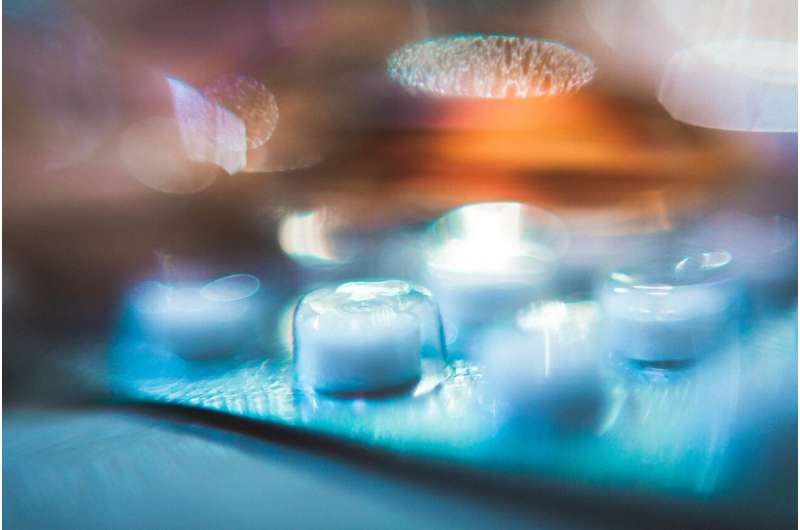This article has been reviewed according to Science X's editorial process and policies. Editors have highlighted the following attributes while ensuring the content's credibility:
fact-checked
peer-reviewed publication
trusted source
proofread
Researchers report potent antibiotic that overcomes resistance

Science Translational Medicine has published a study by researchers from the Institute of Biology Leiden (IBL) on a potent new antibiotic that can overcome resistance. "The idea was to tweak the original antibiotic and create a next-generation drug," says Nathaniel Martin, professor of Biological Chemistry. He is already considering ways to bring the new antibiotic to market.
Sometimes science is about being in the right place at the right time, and that's how the story of the antibiotic EVG7 began. Back in 2017, Nathaniel Martin and his team were working in the lab, developing new chemical reactions that could be used to modify the structure of various molecules.
It was then that Martin first had the idea of applying these new methods to modify the structure of a certain type of antibiotic: vancomycin. He thought of this specific antibiotic for a good reason. Vancomycin is a very useful and strong antibiotic, but it has some drawbacks. It carries the risk of kidney injury, and since the 1980s, more and more bacteria have become resistant to the drug.
A next-generation antibiotic
If a new version of vancomycin could be developed that overcomes these obstacles, it would be a great option for patients suffering from life-threatening infections caused, for example, by hospital superbugs. After early findings indicated that such an improved version was possible, Martin and his team got to work.
"The idea was to tweak the properties of the antibiotic by modifying its structure, creating a next-generation vancomycin," Martin says. In other words, he aimed to make it both stronger and less harmful to the kidneys, as well as capable of overcoming bacterial resistance mechanisms.
A more potent drug, with fewer side effects
During the process, Ph.D. candidate Emma van Groesen played an important role, and the compound EVG7 was named after her initials. The '7' was added because it was the seventh in the series of vancomycin compounds that proved to be the most active one.
And it was indeed very active. Compared to the original vancomycin, EVG7 was found to be 100-to-10,000 times more potent against a range of bacterial pathogens. This means that less of the antibiotic needs to be administered, potentially reducing side effects.
New spin-off company or licensing agreement
Now, several years later, EVG7 is ready for its next phase. "It took us about two and a half years to get our study accepted in Science Translational Medicine," Martin explains. "This is the top journal to aim for and publication in STM often indicates an experimental drug has clinical potential."
It also means the reviewers who assess the manuscript are very experienced and often highly critical. "In our case, they came with two rounds of follow-up questions and requests for additional experiments. But in the end, these reviewers helped make the study stronger."
Martin is already thinking about how to bring this next-generation antibiotic to market. "We have the ambition to either spin out a new company for the development or license the technology to an existing drug company. We are actively pursuing both strategies."
Two to three years before drug can be tested on humans
This doesn't mean EVG7 is quite ready yet for the market. Developing a new drug is a long, complicated and expensive process. Martin expects it will require about 5 million euros in external investment and take two to three years before the drug can be first tested in humans.
His team also needs to further optimize the process used for preparing EVG7, so that the antibiotic can be produced in large enough quantities to be commercially viable.
Martin stresses that it's quite an achievement for a preclinical drug candidate to be developed in an academic lab. In this case, the majority of the experimental work was done by a team consisting of master students, Ph.D.s, and postdoctoral researchers in his lab in the IBL.
More information: Emma van Groesen et al, Semisynthetic guanidino lipoglycopeptides with potent in vitro and in vivo antibacterial activity, Science Translational Medicine (2024). DOI: 10.1126/scitranslmed.abo4736




















